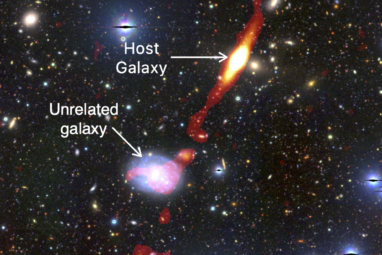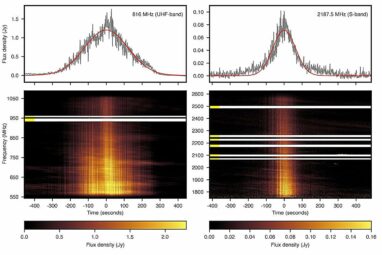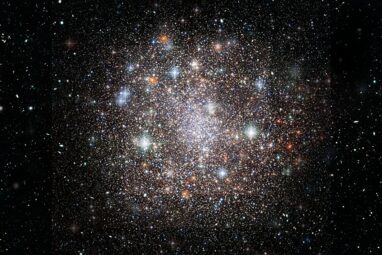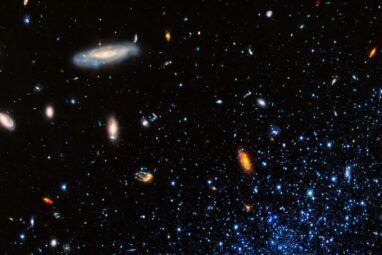Astronomer Calvin Leung was excited last summer to crunch data from a newly commissioned radio telescope to precisely pinpoint the...
A hundred years ago, astronomer Edwin Hubble dramatically expanded the size of the known universe. At a meeting of the...
On 15 March 2024, Einstein Probe’s Wide-field X-ray Telescope (WXT) detected a burst of low-energy X-rays. Astronomers call such X-rays...
At the 2025 Meeting of the American Astronomical Society, two teams of astronomers—centered at Penn State and MIT—independently announced new...
Astronomers have discovered extremely powerful winds pummeling the equator of WASP-127b, a giant exoplanet. Reaching speeds up to 33,000 km/h,...
For the first time, astronomers have traced a fast radio burst (FRB) to the outskirts of an ancient, dead, elliptical...
Astronomers have unveiled an explosive cosmic fireworks display of stars interacting with their environment. This dazzling spectacle—due to powerful winds...
By combining data from the DESI Legacy Imaging Surveys and the Gemini South telescope, astronomers have investigated three ultra-faint dwarf...
Astronomers have discovered an extraordinary new giant radio galaxy with plasma jets 32 times the size of our Milky Way....
When some of the biggest stars reach the end of their lives, they explode in spectacular supernovas and leave behind...
Astronomers have made new discoveries about young star formation in the Large Magellanic Cloud (LMC), using the James Webb Space...
In a study published in the Astrophysical Journal, a team of researchers led by Kristen McQuinn, a scientist at the...



